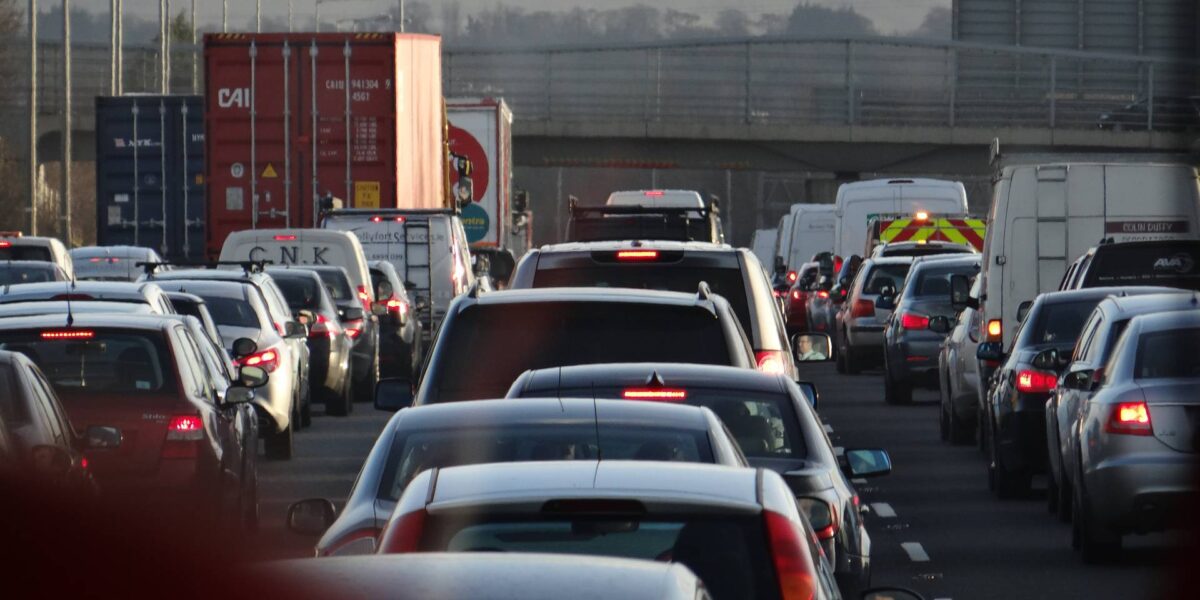Surely before this ridiculous tariff war began thanks to US President Donald Trump, Doug Ford was attempting to make congestion the top issue this provincial election. Meddling in city matters by overriding the Mayor to remove bike lanes off three major roads in Toronto, increasing red tape for future ones, and then making one of his campaign promises to build a tunnel under Highway 401 to ease gridlock. All signs pointed one way, till the storm from the south blew them away.
Call Ford what you want, but he’s an astute politician pitting the car-loving GTA suburbanites against the active-transportation-friendly Toronto. But what we need in Ontario isn’t a cunning politician, but a good leader with burning motivation to take the province forward. I’m from India’s capital New Delhi, and let me tell you – promoting more cars is one of the worst things you can do to a city, without doing absolutely anything to improve congestion.
According to data from the Delhi transport department, everyday an estimated 1,800 vehicles are added to the capital’s already choked roads, making it the 11th most congested city in the world in 2021. The average Indian person spends 59 minutes to travel 20 kilometers one way; and in the National Capital Region (equivalent to the GTA), the average person spends 64 minutes to go 25 kilometers.
Even though congestion has gotten better in Delhi – in 2024 it rose in the ranks and now occupies the title of being the 44th most congested city in the world – congestion and road rage remain a top issue in the city. If we go by the assumption that most of our lives are spent at the workplace, and commuting in Delhi is taking upwards of two hours a day, then a big chunk of your life is being wasted in a car stuck in traffic. However, the city’s attempts to unclog roads have to be acknowledged. These attempts include its deep and continuous investments in the Delhi Metro, making it one of the largest subway systems in the world, improving last mile connectivity and experimenting with the odd-even car rule. The Delhi traffic police continue to identify bottlenecks and deploy traffic controllers to manage busy intersections. For a city saddled with corruption and overall poor management, improving gridlock in one of the most populated cities in the world is no small feat.
The same year that Delhi rose in the ranks, at 17th place, Toronto became one of the most congested cities in the world, with drivers spending almost 200 hours stuck in traffic. In my very humble opinion, this is no way to live a good life. Not only does Toronto lose $11 billion in productivity, but people’s mental health takes the biggest blow. Studies show that traffic leads to stress, depression and higher rates of intimate partner violence. Bike lanes are not the issue causing traffic, they are merely scapegoats. Are there bike lanes on highways? No? Are highways clogged? Yes.
Let’s look at the real reasons behind traffic: Single occupant cars, construction, poor signals, and a chronically under-funded public transit system. The solution cannot be restricted to widening roads, building highways only to add more cars on already packed roads. The province needs to develop cities not around cars, but around people. And in Toronto people are biking, walking, skateboarding. Cities can no longer be built only for cars and for car users. Everyone deserves safe access to roads. And building more transit and improving alternative options to travel will motivate people to leave their car in the garage. Let’s not forget that adding cars also spikes pollution levels, and currently emissions from cars, trucks and other vehicles is the top source of air pollution in Toronto.
With all political leaders trying to win at the insidious battle of, ‘who can cut the most taxes’, where all of us will emerge as losers – because improving public services and cutting taxes are mutually exclusive – it will be a long time before any politician has the courage to float the idea of congestion pricing in Toronto, like New York recently introduced. New York is consistently ranked as one of the most choked cities globally, and now drivers entering the city will have to pay a $9 toll once a day. Just one month into its implementation, the New York Transportation Authority reported 1 million fewer vehicles entering Manhattan’s most congested zone, resulting in faster bus service. London, Singapore and Oslo are other cities with congestion pricing. Toronto could also benefit with a trial, if not permanent implementation. But like most good policies, congestion pricing will require strong political will.
The solutions for easing gridlock are not hard or rocket science. But they aren’t necessarily sexy enough to catch the public’s attention during a snap election. Good policies, however, aren’t supposed to be sexy, they’re meant to make people’s lives better. Personally, I don’t find wasting hours of my precious time idling in traffic while my blood pressure increases an attractive way to live a good life. Doug Ford needs to tone down the political theatre and show leadership – people’s lives and happiness are at stake.
If New Delhi, with less money and more blatant corruption can improve gridlock, then there’s no reason why Toronto can’t.



